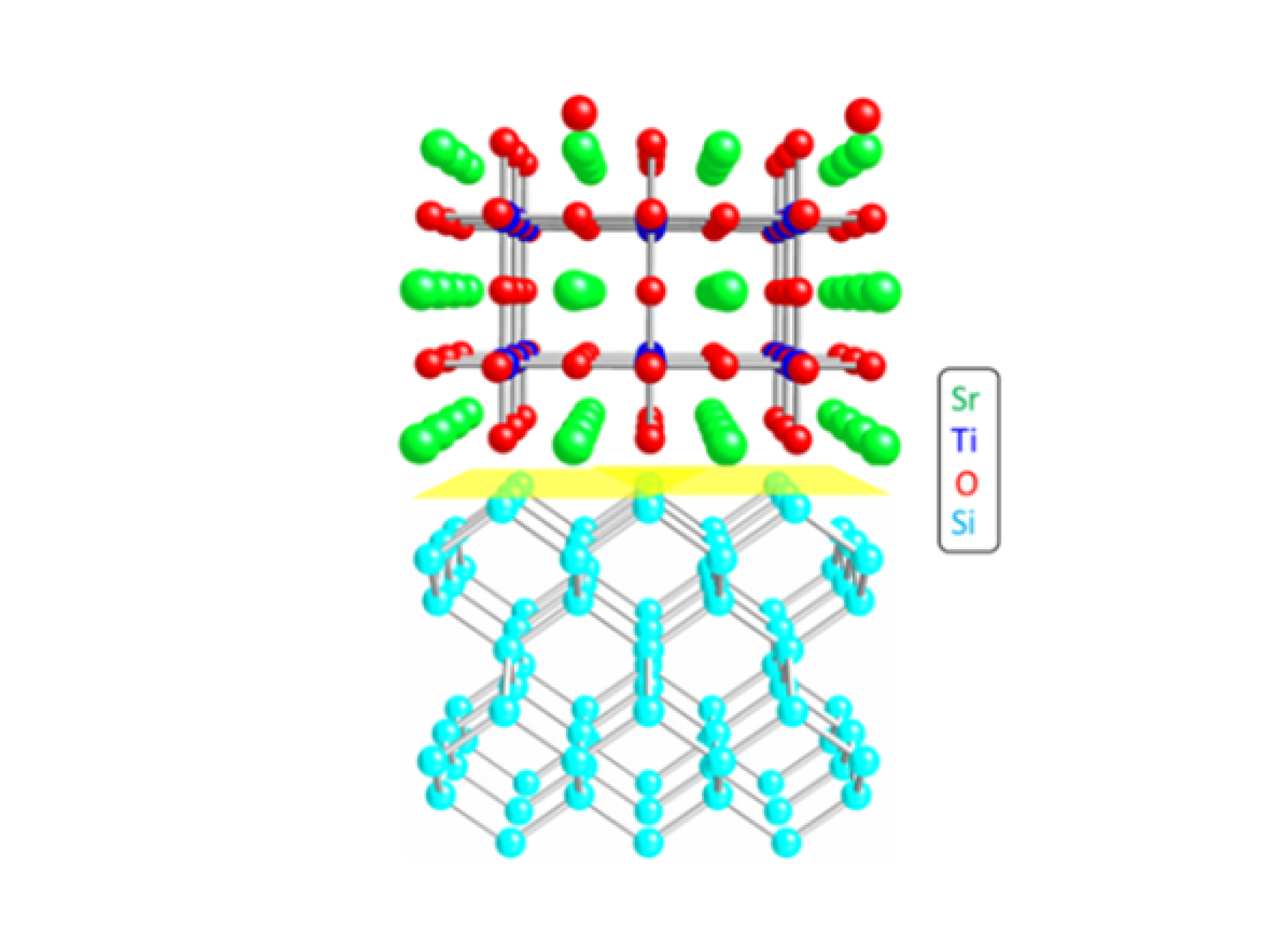Functional Cross Talk Between a Surface and a Buried Interface
Surface composition can control the electronic properties of buried interfaces

Altering the surface composition of a complex oxide structure affects the electronic properties of the overall system.
(Image by Scott Chambers | Pacific Northwest National Laboratory)
The Science
Designing functional materials requires developing control over the formation and behavior of electronic properties. New research studied the conductive interface between strontium titanium oxide (STO) and silicon (Si). The team focused on controlling the electrostatic “pull” of the surface, which naturally draws electrons from the Si into the STO, leaving behind a thin layer of positive charge in the Si that can promote “hole” conduction. (A hole is a positive charge that remains in a semiconductor after an electron is removed.) This novel approach enabled the researchers to produce interfaces with varying hole conductivity by changing the composition of the surface. Combined experimental and theoretical results show that the critical ingredient determining whether hole conductivity occurs is extra oxygen at the surface. The STO film surface naturally attracts extra oxygen, which pulls electrons away from the Si and activates hole conduction. By changing the surface composition so that extra surface oxygen is unstable, electrons are not drawn from the Si and hole conduction either does not occur or is significantly weakened.
The Impact
Charge redistribution across heterojunctions has long been used to induce a functional response in materials systems. This research takes heterojunction charge redistribution to a new level by using surface compositional tuning to remotely control the process. The resulting electronic structure that forms on the Si side of the buried interface has the potential to facilitate the formation of a magnetic ground state if the semiconductor is doped with a few percent of a magnetic transition metal atom. If the interactions are sufficiently strong, a spin-polarized hole current would form near the interface, paving the way towards fabrication of a long sought-after class of devices for spin-based electronics known as spin field effect transistors.
Summary
Changing the distribution of charge within a material can enable the production of novel electronic properties. New research shows that the highly conductive positive layer that forms at the interface of Si and the prototypical oxide semiconductor STO can be weakened or quenched by adding carefully chosen atoms to the surface. This occurs because the conductive layer at the interface is itself formed by electron transfer from Si to STO. The transfer is driven by electron transport to and trapping at the surface. This investigation implicates oxygen bound to the STO surface as the electron trap. By adding an ultrathin layer that modifies the surface composition, oxygen is no longer trapped at the surface. This impedes charge transfer at the interface that in turn weakens or eliminates the conductive layer at the interface.
PNNL Contact
Scott A. Chambers, Pacific Northwest National Laboratory, sa.chambers@pnnl.gov
Peter V. Sushko, Pacific Northwest National Laboratory, peter.sushko@pnnl.gov
Funding
This work was supported by the National Science Foundation (NSF) (Awards Nos. DMR-1508530, CMMI-2132105). HAXPES analysis, ellipsometric band gap determination, x-ray diffraction measurements, and ab initio modeling were supported by the Department of Energy (DOE), Office of Science, Basic Energy Sciences, Materials Sciences and Engineering Division, Synthesis and Processing Science program, FWP 10122. This research used resources of the National Energy Research Scientific Computing Center (NERSC), a DOE Office of Science User Facility supported by the Office of Science of the Department of Energy under Contract No. DE-AC02-05CH11231 using NERSC award BES-ERCAP0021800. Access to certain pieces of equipment used in this research was granted through an EMSL user proposal (Award DOI:10.46936/cpcy.proj.2021.60271/60008423), the Environmental Molecular Sciences Laboratory, a DOE Office of Science User Facility sponsored by the Biological and Environmental Research program under Contract No. DE-AC05-76RL01830.
Published: September 28, 2023
M. Chrysler, J. Gabel, T.-L. Lee, Z. Zhu, T.C. Kaspar, P.V. Sushko, S.A. Chambers, J.H. Ngai, “Surface termination control of charge transfer and band alignment across a semiconductor-crystalline oxide heterojunction”, Phys. Rev. Mater. 7, 084604 (2023). [DOI: 10.1103/PhysRevMaterials.7.084604]